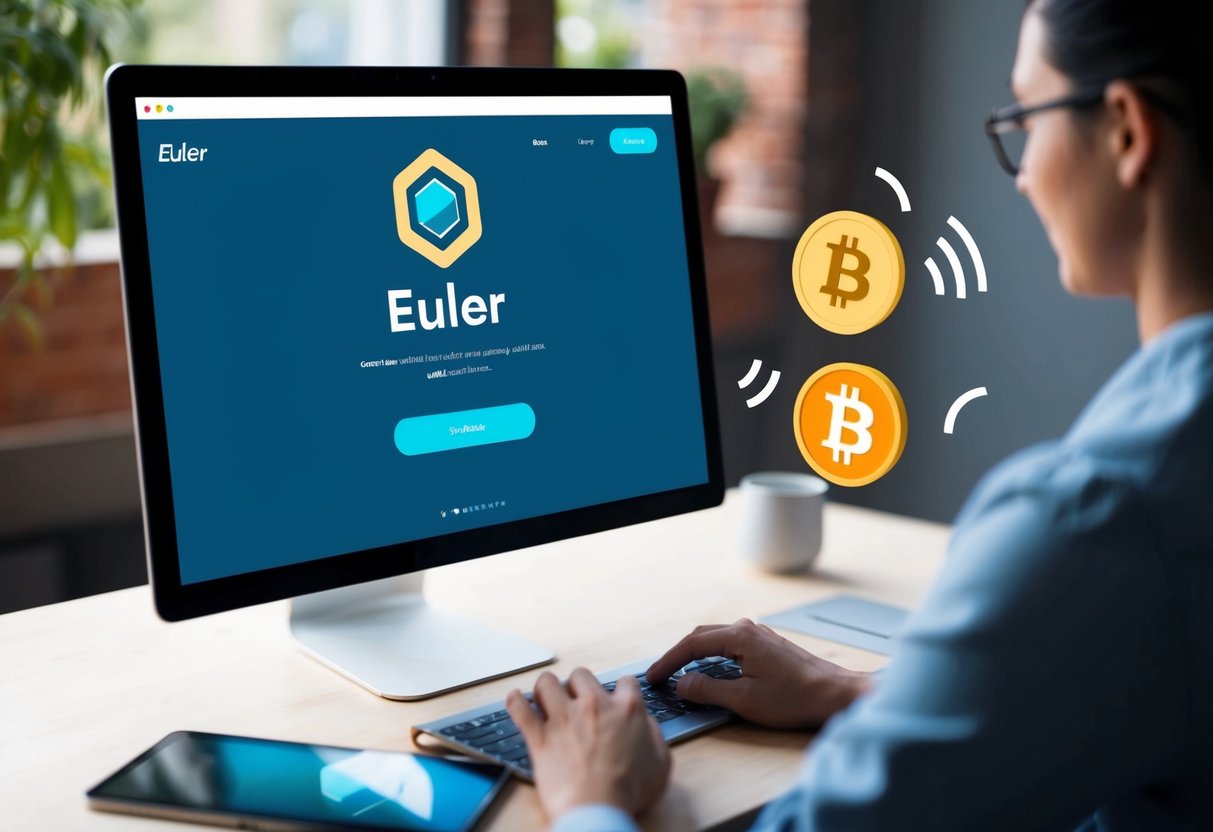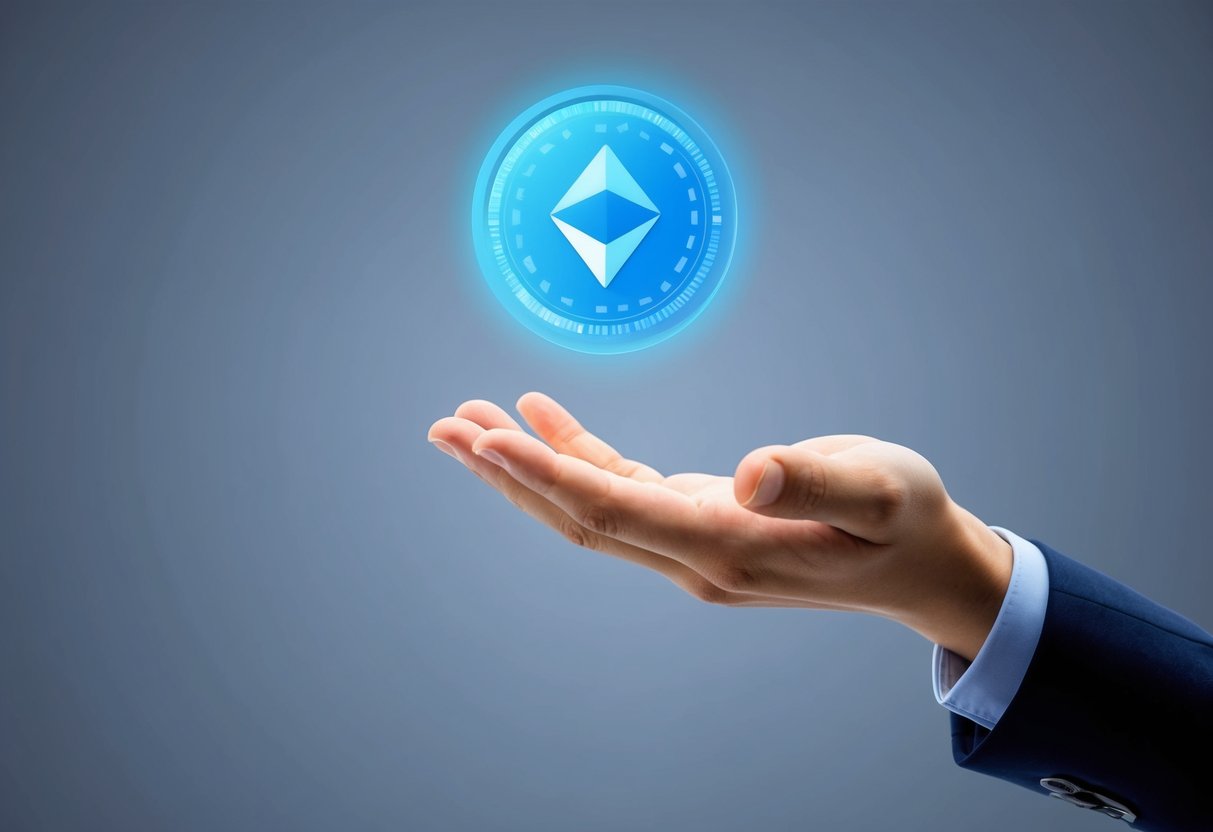
Euler Finance, a modular lending platform, has captured attention with its EUL token airdrop. The project enables users to borrow, lend, and build within the decentralized finance ecosystem without traditional limitations. Borrowers who used Euler Finance between March 21, 2022, and March 11, 2026, will receive a share of 25% of the total token supply as part of the airdrop distribution.

While there was initially no planned airdrop, Euler allocated 1% of the token supply to early users who interacted with the platform during what they called “Epoch 0.” This retroactive distribution rewarded early adopters who helped test and grow the platform before wider adoption. Platforms like DappRadar have made it easier for users to check eligibility and claim their tokens with streamlined processes.
Euler continues to expand its offerings in the DeFi space with upcoming products like SuperFund, described as a stablecoin savings account that will allocate capital across lending protocols. The airdrop represents part of Euler’s strategy to reward community participation while distributing governance rights across its user base.
Today’s Airdrop Checker Even: Step-by-Step Claim:
🌐 Step 1: Visit the Official Airdrop Reward Page.
Dive into the action by heading to the official airdrop page, where all live events are waiting for you. Log into your account by connecting your wallet from any MOBILE/DESKTOP DEVICE.
📱 Step 2: Use Your Mobile Wallet or Desktop
Eligibility checks are mobile or desktop! Grab your smartphone and ensure you’re using a wallet to participate.
💎 Step 3: Meet The Eligibility Criteria
Make sure your wallet isn’t empty or brand new—only active wallets qualify. If one doesn’t work, don’t worry! Try again with another wallet to secure your rewards. You can claim many rewards from multiple wallets, so try to use multiple wallets to increase your chance to claim.
💰 Step 4: Withdraw The Tokens
After signing the approval from your wallet, wait 5 to 10 minutes, and then congratulations! You will see a token claim in your wallet. You can easily exchange your tokens from SushiSwap, PancakeSwap, and many more.
Understanding Euler Airdrop

Euler’s airdrop represents a significant token distribution event in the DeFi ecosystem. The Euler Finance protocol has chosen to distribute its native $EUL tokens to eligible users as part of its community-building strategy and governance implementation.
What Is Euler Airdrop
The Euler Airdrop is a distribution of $EUL tokens directly to cryptocurrency wallets of eligible users. Euler Finance is a non-custodial lending protocol built on Ethereum that allows users to lend and borrow almost any crypto asset without traditional limitations.
The airdrop serves as both a reward for early supporters and a method to decentralize governance. Users who interacted with the Euler protocol before a specific snapshot date may qualify to receive tokens.
Technically, the airdrop transfers the $EUL governance token, which gives holders voting rights on protocol decisions. The token also has utility within the Euler ecosystem for various platform functions.
Purpose and Benefits
The primary purpose of the Euler Airdrop is to decentralize governance of the protocol by distributing voting power among community members. This approach aligns with crypto’s core principles of decentralization.
For the project, the airdrop creates increased awareness and adoption of the Euler Finance platform. It incentivizes new users to explore the protocol’s lending and borrowing features.
For recipients, the benefits include:
- Immediate token value that can be held or traded
- Voting rights in the Euler governance system
- Potential future utility within the protocol
- Community membership and participation rights
The airdrop essentially bootstraps a community of stakeholders who have incentives to participate in the growth and development of the protocol.
Key Dates and Timeline
The Euler Airdrop follows a structured timeline with several important dates. The eligibility snapshot was taken prior to the official announcement, capturing user activity on the protocol.
Token claim period: Users can claim their tokens through the official Euler Finance website or using platforms like DappRadar that support the claim process.
Distribution phases: The airdrop may be distributed in phases rather than all at once.
Important deadlines:
- Claim deadline: Recipients must claim their tokens before a specified deadline
- Vesting schedule: Some tokens may vest over time rather than being immediately transferable
- Governance activation: When token holders can begin participating in protocol decisions
Users should verify all dates on the official Euler Finance website as schedules may be subject to updates.
Eligibility and Requirements

To qualify for the Euler airdrop, users must meet specific criteria and understand the transaction requirements. While information about eligibility varies across sources, there are several key factors that determine who can participate in the potential distribution of EUL tokens.
User Criteria
Users who previously interacted with the Euler Finance protocol during what was called “Epoch 0” may be eligible for an airdrop allocation. According to official information from Euler Finance, 1% of the total supply was allocated as a one-time distribution to early users who engaged with the dApp during this initial phase.
Some sources suggest checking eligibility by inputting your Ethereum wallet address (beginning with ‘0x’) into a search field on official platforms. If you qualify, the system should display confirmation of your eligibility status.
It’s important to note that while some sources mention an “unconfirmed” potential airdrop, others clearly state “there is no airdrop” beyond the initial distribution to early users.
Transaction Activity
Transaction history plays a crucial role in determining airdrop eligibility. Users who actively engaged with the Euler protocol through lending, borrowing, or providing liquidity may have higher chances of qualifying.
The protocol likely monitors specific types of on-chain activities such as:
- Depositing assets into the protocol
- Borrowing against collateral
- Repaying loans
- Providing liquidity
- Participating in governance
Meaningful engagement rather than mere token holding appears to be valued. Some airdrops in the DeFi space reward users who demonstrated sustained activity rather than those who made minimal transactions specifically to qualify.
Supported Assets
Euler Finance supports various Ethereum-based assets that users can deposit or borrow. Interaction with these supported assets might factor into airdrop eligibility requirements.
Key supported assets likely include:
- ETH (Ethereum)
- USDC
- DAI
- Other major ERC-20 tokens and stablecoins
One specific asset mentioned in the search results is eUSDe. According to one source, holding at least 1 eUSDe token guarantees receiving a role that “may be associated with separate airdrop opportunities in the future.”
For the most accurate information about supported assets and their impact on eligibility, users should consult Euler’s official documentation or community channels rather than relying solely on third-party sources.
How to Claim Euler Airdrop

Claiming your $EUL tokens requires following specific steps to ensure you can access your airdrop safely and efficiently. The process involves checking eligibility, connecting the right wallet, and taking proper security measures.
Step-By-Step Guide
To claim your Euler ($EUL) airdrop, first visit the official Euler airdrop page. This is crucial as many scam sites exist that try to steal your crypto. Check your eligibility by entering your Ethereum wallet address (starting with “0x”) in the search field.
If you’re eligible, you’ll see how many $EUL tokens you can claim. The interface will show clear instructions to proceed with the claim. Follow the prompts by connecting your wallet and approving the transaction.
The claim process usually requires a small amount of ETH for gas fees. Once you confirm the transaction, the $EUL tokens will be sent to your wallet. You can verify the transaction on Etherscan to make sure it completed successfully.
Connecting Wallets
Euler’s airdrop platform supports several popular Ethereum wallets. MetaMask is the most commonly used option, but you can also connect Coinbase Wallet, WalletConnect, or a hardware wallet like Ledger for extra security.
Make sure your wallet holds some ETH before starting the claim process. This covers the transaction fees on the Ethereum network. The wallet must be the same one that qualifies for the airdrop.
When connecting, always check that you’re on the official Euler website. Look for the secure connection symbol (lock icon) in your browser and verify the URL. Never share your seed phrase or private keys with anyone, including sites claiming to help with airdrops.
Security Best Practices
When claiming any airdrop, including Euler’s $EUL tokens, security should be your top priority. Always use hardware wallets when possible, as they keep your private keys offline and safe from hackers.
Essential security tips:
- Double-check URLs before connecting your wallet
- Never share your seed phrase or private keys
- Be suspicious of any direct messages about airdrops
- Use a separate wallet with limited funds for claiming
- Enable two-factor authentication where available
Watch out for phishing attempts that impersonate the Euler protocol. Legitimate DeFi projects like Euler will never ask for your private keys or send unsolicited messages. When interacting with smart contracts, check that they’re verified on Etherscan and match the official contracts listed on Euler’s documentation.
Impact on DeFi and Ecosystem
The Euler airdrop has created significant ripples across the DeFi landscape, affecting everything from liquidity patterns to user participation. Euler’s recovery from its $197 million exploit and subsequent launch of Euler v2 demonstrates the resilience and adaptability that characterizes successful DeFi protocols.
Integration With Decentralized Exchanges
Euler’s integration with decentralized exchanges (DEXs) has strengthened the overall DeFi infrastructure. The protocol enables seamless lending and borrowing on these platforms, creating more efficient capital markets.
Users can now leverage Euler’s lending capabilities while trading on DEXs like Uniswap and Sushiswap. This integration reduces friction and enhances liquidity across the ecosystem.
The protocol has also shown promising connections with the Bob Network, which might further expand Euler’s reach. Cross-chain compatibility remains a priority, with interoperability solutions being developed to connect Euler across multiple blockchains.
Recent data shows that DEX volume increased by approximately 15% following Euler’s recovery and expansion, indicating positive market reception. This integration has particularly benefited smaller DEXs by providing additional liquidity options.
Role of Stablecoins and Collateral
Stablecoins play a crucial role in Euler’s ecosystem, serving as both lending assets and collateral. The USDC.e/scUSD pair has emerged as one of the key incentivized markets within the Euler protocol.
Collateral management on Euler offers unique advantages compared to other lending protocols. Users can deposit a variety of assets as collateral, enabling more flexible borrowing strategies.
The protocol’s approach to risk management has evolved significantly since the exploit. New collateral verification processes and improved oracle implementations help prevent similar security breaches.
Euler’s partnership with Morpho has enhanced its stablecoin capabilities, offering users more options for earning yield. This collaboration strengthens both protocols while providing more stable returns for users.
Future Prospects
Euler’s future in the DeFi space looks promising despite earlier challenges. The successful transition to Euler v2 and integration with Sonic demonstrate the team’s commitment to rebuilding trust and expanding functionality.
Upcoming developments include potential partnerships with Pendle, which would add yield trading capabilities to Euler’s suite of services. This collaboration could create new passive income streams for users.
The protocol’s approach to governance is evolving, with token holders gaining more influence over key decisions. This decentralized governance model aims to prevent centralized points of failure.
Euler’s recovery strategy offers valuable lessons for other DeFi protocols that face security challenges. Their transparent approach to addressing the exploit has helped restore community confidence.
The team’s focus on sustainable growth rather than short-term gains suggests a mature understanding of DeFi’s cyclical nature. Unlike many projects that launched through ICOs, Euler has demonstrated staying power beyond initial hype.
Frequently Asked Questions
Many Euler users have questions about the airdrop process. These FAQs address eligibility, token claiming, security concerns, and trading opportunities.
What is the eligibility criteria to participate in the Euler Airdrop?
Euler did not set specific minimums for airdrop eligibility. The airdrop was primarily allocated to users who interacted with the Euler dApp during Epoch 0.
About 1% of the total token supply was set aside for these early users as a one-time allocation. Unlike many projects, Euler does not have an ongoing airdrop program.
Users who made deposits, borrowed, or otherwise engaged with the protocol during the qualifying period were considered for the distribution.
How can I claim my tokens from the Euler Airdrop?
Claiming Euler airdrop tokens requires a compatible crypto wallet that supports the EUL token. Popular wallet options include Trust Wallet and other Ethereum-compatible wallets.
Users need to connect their eligible wallet to the official Euler platform to check if they qualified for the airdrop. The claiming process typically involves signing a transaction.
Euler sends notifications to eligible addresses. Be cautious of phishing attempts and only use official links from Euler’s verified channels.
Are there any risks associated with participating in the Euler Airdrop?
Scam attempts targeting airdrop participants represent the biggest risk. Fraudsters often create fake airdrop pages to steal users’ private keys or funds.
Smart contract vulnerabilities can potentially expose users to risks during the claiming process. Using hardware wallets adds an extra security layer.
Market volatility may affect token value immediately after distribution. Newly distributed tokens sometimes experience significant price fluctuations.
What steps should I follow to ensure the security of my assets during the Euler Airdrop?
Always verify communications through official Euler channels before taking action. Ignore unsolicited messages about airdrops, as these are typically scams.
Use hardware wallets like Ledger when possible for claiming airdrops. These devices provide additional security by keeping private keys offline.
Be cautious of unsolicited airdrops or NFTs appearing in your wallet. Research thoroughly before interacting with any unexpected tokens.
Can the Euler Airdrop tokens be traded immediately, and if so, where?
EUL tokens are typically available for trading soon after distribution on decentralized exchanges like Uniswap. Major centralized exchanges may also list the token based on market demand.
Trading liquidity might be limited immediately after the airdrop. This could lead to higher price volatility during the initial trading period.
Check Euler’s official announcements for information about exchange listings and token unlock schedules that might affect trading.
What impact might the Euler Airdrop have on the overall value of Euler tokens?
Airdrops often create short-term selling pressure as some recipients quickly liquidate their free tokens. This can temporarily depress prices.
Long-term token value depends more on Euler’s protocol development, user adoption, and governance decisions than on the airdrop itself.
Distribution to engaged users can potentially improve token distribution and governance participation, benefiting the project’s decentralization goals.
Leave a Reply